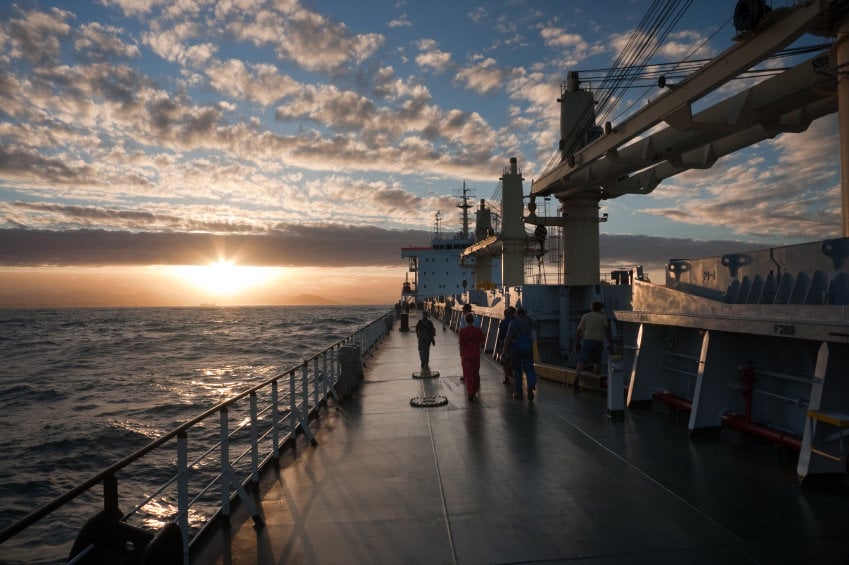According to the WTO, in 2004, the value of international trade rose by nearly 21%. This represented the highest growth rate in 25 years. This overwhelming success was partly attributed to the presence of an efficient ocean transportation system, and more specifically, to the current trends taking place within the industry. The following are some of the current trends in ocean transportation.

Supply Chain
Recently the IAS added three new modules to its Dispatch Manager product in a bid to automate the container haulage work order process from creation to proof delivery. The additional modules are meant to enable cargo owners, ocean carriers and motor to connect effectively. Another recent development has been the gradual reduction in trade transaction costs and the time needed to clear goods. It is estimated that in 2006, an average of 17 days and $842 were required to seal an APEC outbound transaction for one container. Today both time and cost of the transaction has been reduced significantly. Also, now a Panama Maritime Chamber membership has become open to ship owners around the globe whose ships are registered in Panama. This move is geared towards providing ship-owners with networking, education, and information.
Technology

Among developments recently realized in the area of technology includes the introduction of advanced data capturing system, increased use of e-commerce, and the launch of an advanced supply chain management systems: Agistix, a transportation systems developer recently introduced a new application for enhancing supply chain data capturing process. The utilization of e-commerce in maritime shipping, on the other hand reached an all time high, when two million container orders were made through its portal. In the same measure, a new version of Ocean Tender, a popular supply chain management system was launched in the industry. The recent version is known as Ocean Tender 3.1.
Markets
Recently, Mexico and Japan have expressed an interest in joining the Transpacific Partnership; an agreement made between nine nations to promote investments and trade. Philippines and the United states on the other hand, have just signed a trade facilitation and customs administration agreement with the view of improving their global trade relations.
Transportation
Key progress in the research on alternative fuels, and the increasing need to curb overweight containers are some of the latest progress in matters related to transport. It was recently announced by the Federal Maritime Commission that notable progress had just been made in the quest for alternative fuels for commercial ships. Concerned about the implications that overweight containers has on the insurance industry, TT Club, a major Insurance company has been advocating for the weighing of containers weighed.
Regulatory
Some of the notable achievements made in this area include the enhanced monitoring of operations and the issuance of stringent penalties to protect the credibility of the industry, as well as the issuance of licenses to new operators. For instance, Sea Star Line was ordered to pay a criminal fine of $14.2 million having been found guilty of conspiring to fix prices. And as the Sea Star Line found itself on the wrong side of the law, 10 license applications were received by the U.S Federal Maritime Commission. Phison International and Elk Grove Village and DW Logistics Solutions are among the 10 companies interested into the various areas of the industry.
The size and structure of containerships
Containerships are being modified to align their structure with the characteristics of existing shipping lanes and capabilities of ports. In a departure from the past where all container carriers were predictably ultra large, current vessels are slightly shorter (350-370m) unlike those of years gone by (396m). The move towards a more compact size is aimed at enabling vessels to fit perfectly in the recently introduced Panama Canal locks, as well as enhancing the maneuverability of vessels on bendy rivers.
Gateways, inland ports, and corridors

Corridors are being developed with the aim of establishing connectivity to inland terminal facilities. Such inland terminal facilities may be used as load centers, satellite terminals, and transmodal facilities. Terminal operators, port authorities, commercial real estate developers and local governments are being included in the establishment of these facilities.
Predicted Developments In The Sea Transportation
Going forward, these are some of the changes expected to take place in the industry in the coming years:
As the sea tranportation industry becomes less profitable, it has been predicted that in the future, shipping companies are likely to experience more difficulties in securing capital for investment purposes. According to the Global Port Tracker, United States imported volume is expected to go down by about 2% by the end of November.




